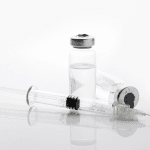Intra-articular hyaluronic acid injections are often discussed as viscosupplementation (joint fluid supplementation) for knee osteoarthritis. Clinics evaluating these products usually need more than a brand overview. You need operational clarity, realistic expectations, and a consistent process for documentation and follow-up.
This guide focuses on monovisc vs synvisc from a clinic workflow lens. It outlines what differs, what is similar, and what to confirm in labeling and payer policy. It also highlights how to counsel patients in plain language without overpromising results.
MedWholesaleSupplies supports verified healthcare accounts, rather than consumer purchasing pathways.
Key Takeaways
- Both are hyaluronic acid viscosupplements for intra-articular use.
- Formulation and product naming drive visit scheduling differences.
- Plan for procedure-day documentation, lot tracking, and follow-up.
- Set patient expectations using label language and your protocol.
- Use reviews cautiously; prioritize trial data and guideline context.
Where Viscosupplementation Fits in Knee OA Care
Hyaluronic acid (also called hyaluronan) is a normal component of synovial fluid. In knee osteoarthritis, synovial fluid properties can change, and patients may report pain, stiffness, and activity limits. Viscosupplementation aims to improve joint lubrication and shock absorption. Outcomes can vary by patient factors and disease severity, so clinics usually position these injections as one option among several, not a guaranteed fix.
For staff education, it helps to align language across the team. Patients often call these “gel shots” or “rooster comb injections.” Clinicians may use “intra-articular HA” or “viscosupplementation.” A short handout or scripted explanation reduces mixed messages and reduces post-visit calls. For a broader overview you can share internally, see Types Of Gel Injections and Understanding Rooster Comb Injections.
Operationally, you will also want to standardize where these products sit within your inventory. Many practices manage them under an orthopedic injectables workflow, with consistent receiving checks and lot capture. A browseable hub can help teams keep product classes organized, such as Orthopedic Injectables Category.
Monovisc vs Synvisc: Practical Differences for Clinics
Clinics comparing these products are usually trying to solve two problems at once: selecting an appropriate viscosupplement option and building a repeatable visit cadence. Both products are in the same class, but they are not interchangeable in a regulatory or operational sense. Your team should treat each as a distinct, labeled product with its own instructions for use (IFU), contraindications, and handling requirements.
Formulation and source
Both products are hyaluronic acid–based, but the specific material and manufacturing approach can differ. Synvisc is commonly described as hylan G-F 20, a modified hyaluronan. Manufacturer materials also describe it as avian-derived. Monovisc is described by its manufacturer as a non-avian hyaluronan product. These details can matter for patient discussions about sensitivities and for your staff’s “what is it” script. When patients ask for a “generic,” it helps to explain that viscosupplements are branded, device-regulated formulations, not generics in the classic small-molecule drug sense.
Visit cadence and scheduling
In practice operations, the biggest day-to-day difference is appointment structure. Some HA products are designed for a single visit, while others are packaged and labeled as a multi-visit series. Synvisc naming is a common source of confusion, because Synvisc and Synvisc-One are distinct presentations. If your clinic frequently fields these questions, a short internal comparison note can help front desk staff reduce errors. For a focused explainer, see Comparing Synvisc And Synvisc-One.
The most clinic-relevant questions are practical. How many appointments should you tentatively reserve? Will you need prior authorization steps that depend on a series format? Who will confirm the exact product requested by the prescriber? Getting these answers early prevents last-minute rescheduling.
| Clinic consideration | What to confirm in labeling and workflow |
|---|---|
| Product identity | Use exact brand and presentation name; avoid “HA injection” shorthand in ordering. |
| Series vs single visit | Verify whether the presentation is labeled for one visit or a series. |
| Source and composition | Check IFU for hyaluronan derivative and any source statements. |
| Patient communication | Set expectations on onset variability and possible post-injection soreness. |
| Inventory controls | Capture lot/expiration at receiving and again at administration. |
When you are building internal references, linking your preferred product records can reduce selection errors. Examples include Monovisc Prefilled Syringe and Orthovisc Product Page.
Injection-Day Workflow and Documentation
Standardizing the injection visit protects both quality and throughput. It also reduces back-and-forth between clinical staff and billing teams. Most workflow breakdowns look similar: confirm the intended product, confirm laterality, prepare the field, administer using your technique, then document and schedule follow-up. The details vary by site policy and labeling, so the goal is a consistent checklist, not a one-size-fits-all protocol.
A recurring failure point is “product mismatch.” The order might say a brand, while the chart note says “Synvisc,” and the patient believes they are getting “the one-shot version.” Tight naming discipline helps. If the patient is transferring care, request prior records that include product name, dates, and any reactions. This can support continuity when the patient reports prior Synvisc injection reviews or “bad reactions” without specifics.
Inventory used in clinics is sourced through distributor channels that are screened for legitimacy.
Clinic checklist: what to have ready before rooming
- Exact product name
- Laterality confirmation
- Consent and counseling notes
- Lot and expiration fields
- Supplies and sterile setup
- Post-visit instructions
- Follow-up plan template
Documentation should be predictable and auditable. Many clinics include: indication (knee osteoarthritis in plain language too), product identity, lot/expiration, route and site, any aspiration performed, patient tolerance, and post-procedure guidance. If your EHR supports it, include unique device identifier (UDI) data when available. That step can save time if an adverse event investigation is ever needed.
Why it matters: Consistent lot capture supports recall response and adverse event follow-up.
For teams building education packets, consider linking clinicians to deeper background on comparisons and patient selection discussions, such as Synvisc Considerations For Younger Individuals.
Aftercare, Recovery Time, and Patient Communications
Patients often ask what should i do after synvisc injection, or how long does it take for monovisc injection to work. The safest way to answer is to keep your message consistent with labeling and your clinician’s standard instructions. Many IFUs and clinic protocols recommend avoiding strenuous, high-impact activity for a short period after the injection. They also emphasize watching for escalating pain, warmth, or swelling beyond expected soreness.
From an operations standpoint, aftercare messaging is also a call-reduction strategy. Provide written instructions in plain language. Reinforce what is expected versus what is concerning. Clarify that response timing is variable, and that some patients notice gradual change rather than a clear “onset day.” This helps keep monovisc injection recovery time discussions realistic and avoids framing the visit as an immediate rescue intervention.
Quick tip: Use one standardized after-visit handout for all HA products.
When disease is advanced, patients may search for “bone-on-bone” narratives and draw conclusions from online stories. Rather than debating anecdotes, anchor the discussion to functional goals, safety monitoring, and next-step options if pain persists. If your staff want a structured perspective on advanced disease conversations, see Synvisc In Severe Osteoarthritis.
To avoid mixed signals, decide internally who delivers which message. Front desk can confirm scheduling and series timing. Clinical staff can review expected local reactions and red flags. Clinicians can discuss how viscosupplementation fits alongside physical therapy, analgesics, or surgical consult pathways, as appropriate for your practice.
Safety Profile and Adverse Event Monitoring
Across hyaluronic acid injections, the most discussed tolerability issues are local reactions. Patients may report pain, swelling, warmth, stiffness, or a joint effusion (fluid build-up) after the injection. These are often mild, but severity varies. Clinics should also be prepared for uncommon inflammatory reactions that may mimic infection. Because the injection is intra-articular, aseptic technique and careful post-visit instructions remain central, regardless of product selection.
When patients ask is monovisc a steroid, the key clarification is straightforward. Monovisc is not a corticosteroid. It is a hyaluronic acid viscosupplement. Similarly, Synvisc is not a steroid injection. Patients can confuse these categories because both can be administered in the same setting for knee pain. A short category explanation reduces confusion and helps patients accurately report prior therapies to other providers.
Longer-horizon questions come up as well, including monovisc long term side effects. For most clinics, the best response is to separate “known risks in labeling” from “online speculation.” Emphasize monitoring for infection, allergic-type reactions, and ongoing symptoms that do not follow the expected course described in the IFU. Document patient-reported reactions clearly, including timing and progression.
MedWholesaleSupplies focuses on authentic, brand-name medical products for licensed clinical use.
If your clinicians are comparing product safety narratives, it can help to review broader class discussions rather than relying on isolated stories. A useful starting point is Comparing Hyalgan And Other Injections, and for clinics that stock Hyalgan, a reference record like Hyalgan Product Listing.
How to Interpret Reviews and Compare Alternatives
Patients frequently arrive with screenshots of monovisc reviews, hyalgan injection reviews, or synvisc injection reviews. Reviews can capture real experiences, but they rarely control for diagnosis, imaging severity, technique, or concurrent therapies. They also over-represent extreme outcomes. In clinic conversations, you can acknowledge the story while redirecting to evidence sources and individualized goal setting. From a practice manager standpoint, the aim is consistent messaging across staff, so patients do not hear conflicting interpretations.
A separate but related question is “success rate,” including what is the success rate of euflexxa injections. Published studies use different endpoints, timelines, and populations, so a single percentage is often misleading. If your team wants a structured way to compare options, keep it to a few decision factors that are operationally meaningful and label-aligned.
How to compare hyaluronic acid injections in clinic operations
Start with visit pattern and scheduling complexity, because it drives staffing and chair time. Next, review formulation details and any source statements, since patient concerns can affect acceptance. Then confirm what your payers require in terms of documentation and prior therapy history, because the administrative burden can outweigh small theoretical differences. Finally, consider stocking strategy: whether you keep multiple brands on hand or restrict to a smaller set to reduce selection errors. This approach supports a cleaner comparison of hyaluronic acid injections without turning the discussion into marketing claims.
When patients ask “which is better,” it helps to present alternatives as comparable tools with different logistics. For deeper reading you can share internally, see Orthovisc Vs Synvisc and Euflexxa Vs Orthovisc. If your clinicians also discuss adjacent products in the same class, Supartz Vs Euflexxa can be a useful reference point for terminology consistency.
Finally, remember that patient goals differ. A sports medicine practice may emphasize return-to-activity counseling, while a primary care clinic may emphasize stairs and sleep. If you manage mixed populations, consider maintaining two versions of your education sheet with the same safety language but different goal examples. For sports-facing discussions, see Hyalgan In Sports Medicine.
Authoritative Sources
- AAOS Clinical Practice Guideline: Knee Osteoarthritis (Non-Arthroplasty)
- FDA Overview: 510(k) Medical Device Clearances
In day-to-day practice, the best results come from tight process control. Use precise product naming, consistent chart templates, and a clear patient instruction handout. That reduces confusion when patients compare brands online and ask for substitutions that are not clinically equivalent.
For further reading, review your preferred brand’s IFU alongside your clinic’s standard injection documentation and follow-up pathway.
This content is for informational purposes only and is not a substitute for professional medical advice.






